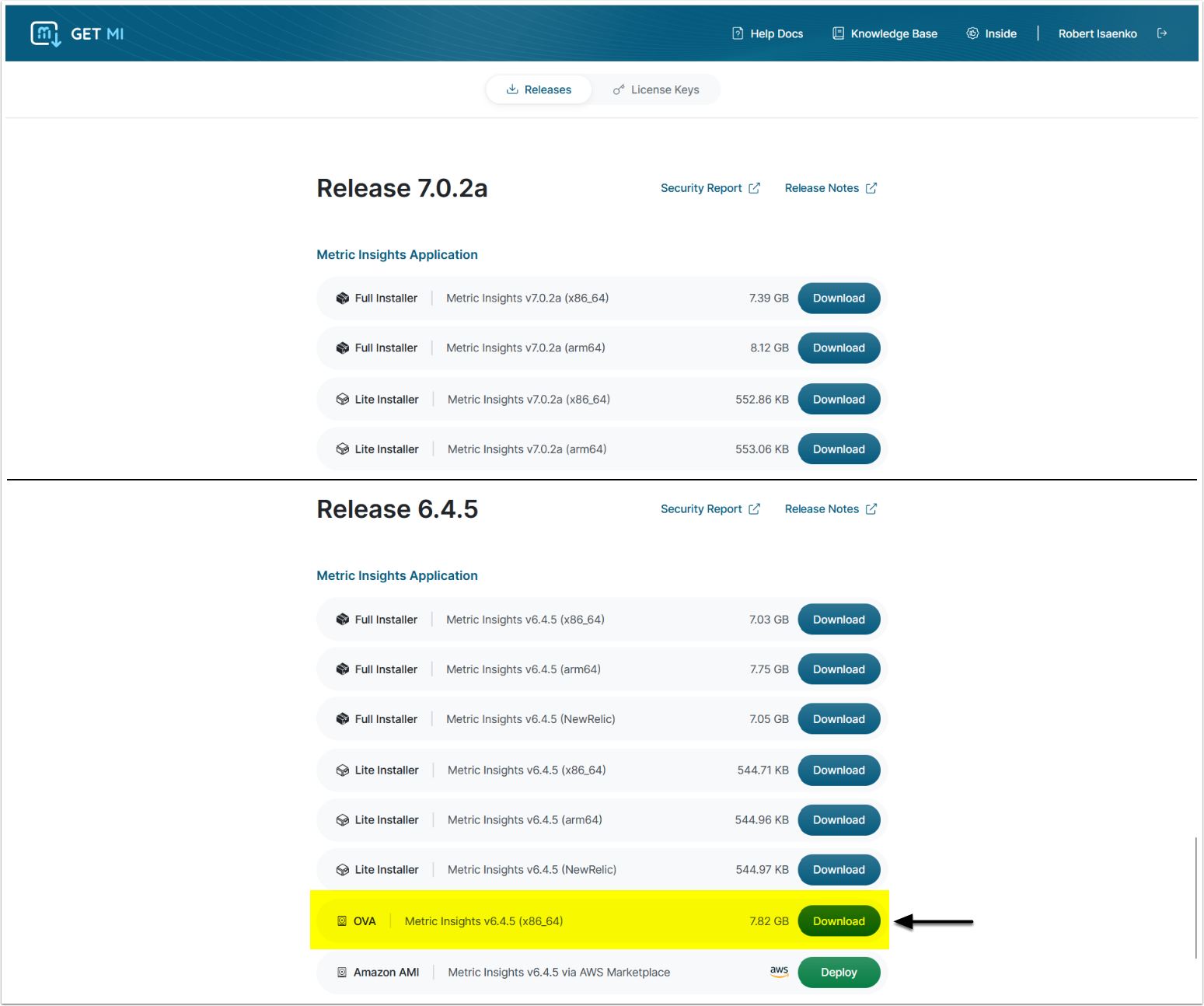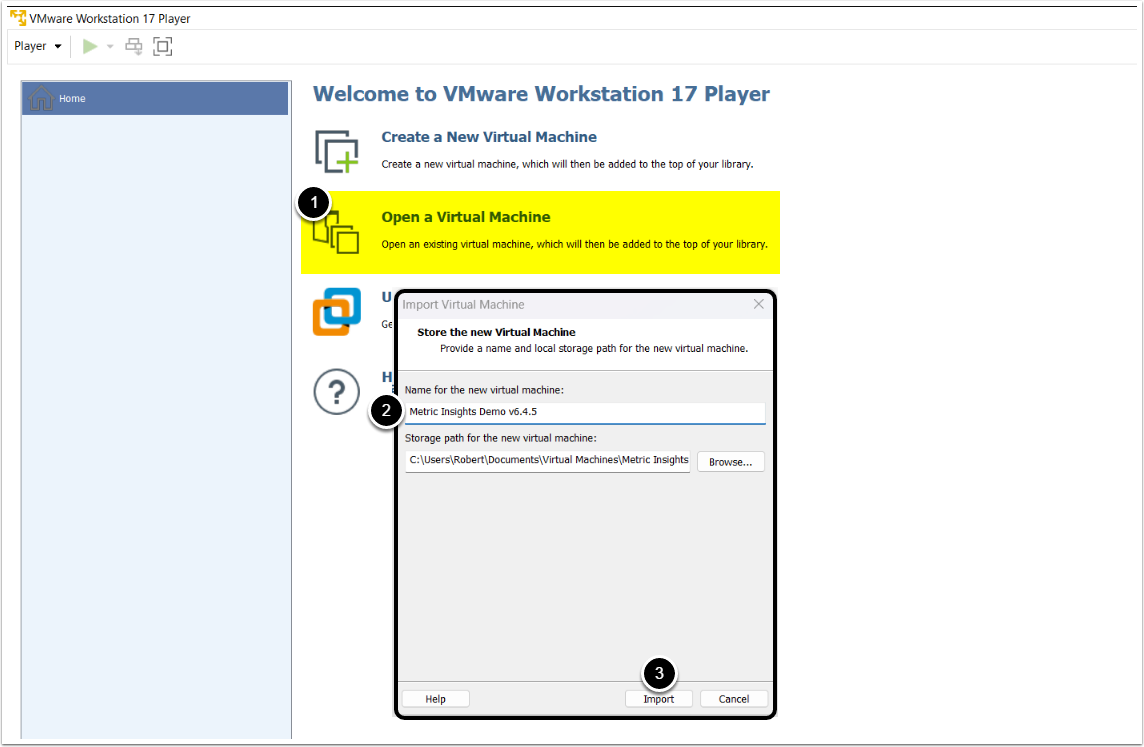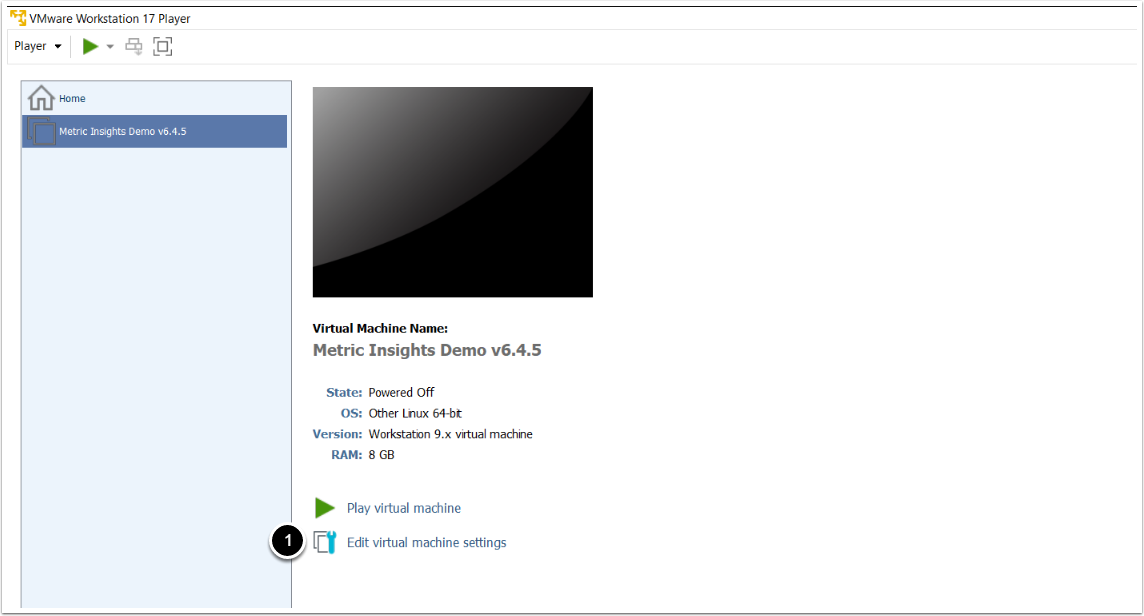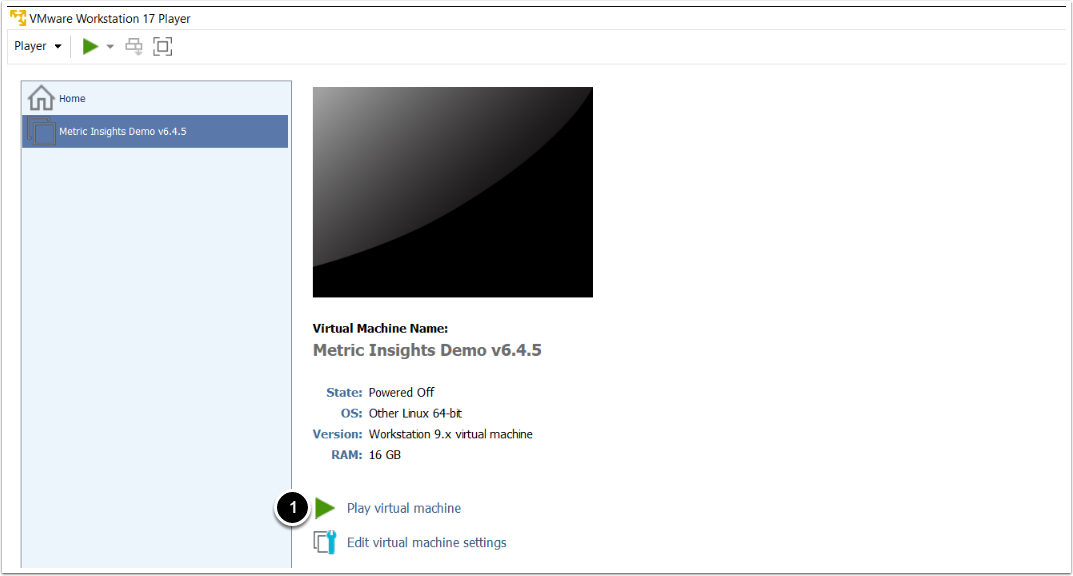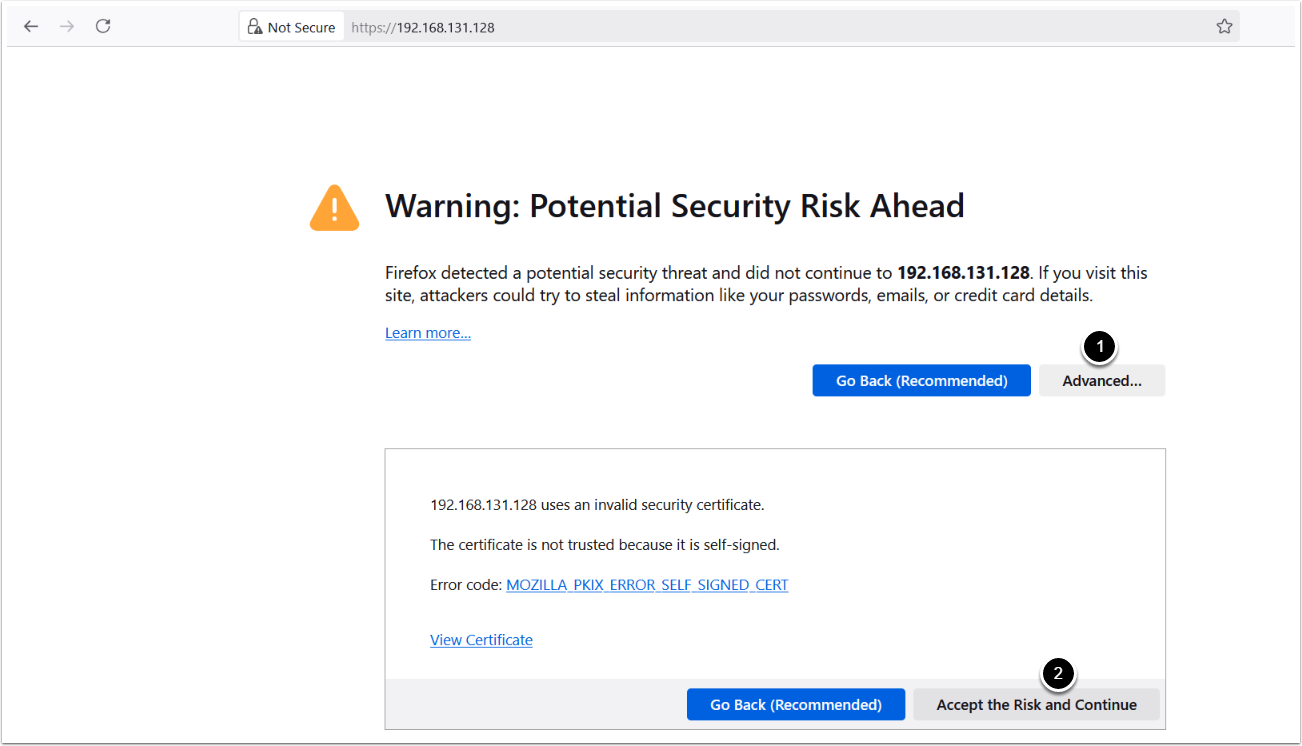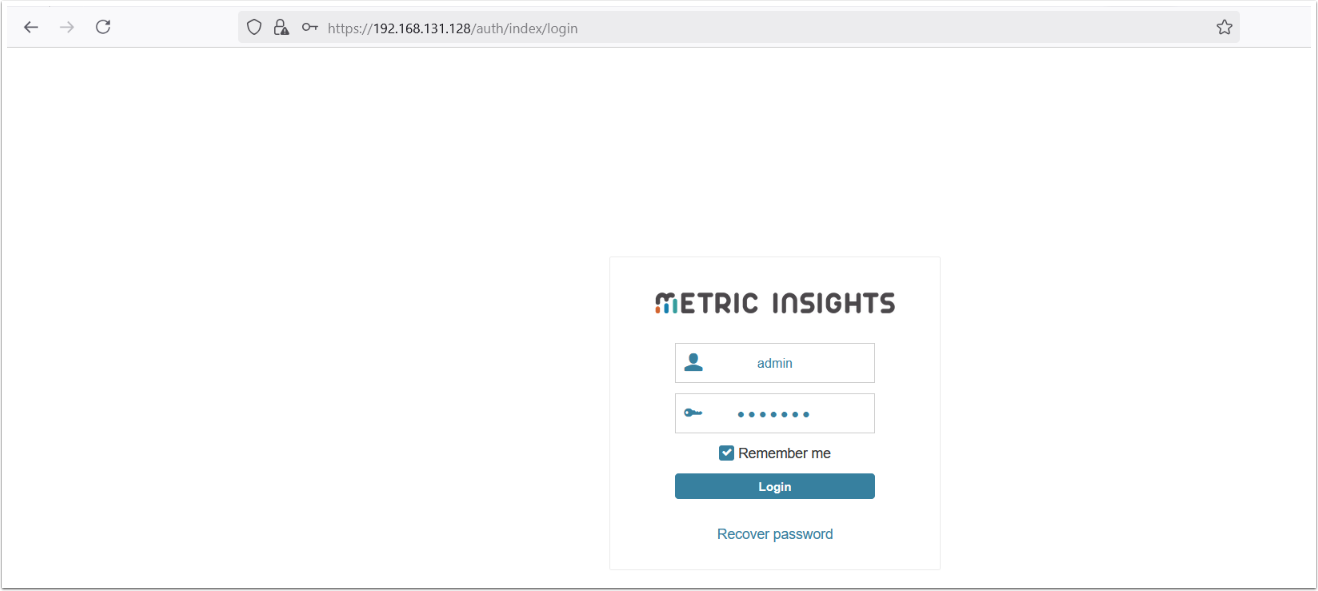This article shows how to deploy Metric Insights as a virtual appliance. If you have not already done so, you will need to request the Metric Insights software. Download a copy of software at https://get.metricinsights.com/ or contact support@metricinsights.com.
Table of contents:
1. Install VMware Player or Another Virtualization Environment
You will need a suitable virtualization environment in which to 'play' the virtual appliance. If you're just trying out Metric Insights and would like to use a desktop machine, you can use VMware Player (Windows) or VMware Fusion (Mac). (We don't recommend desktop machines -- even for pilot projects -- unless they are dedicated machines that will always be running and accessible.) For production installations, you will probably want an enterprise virtualization environment such as VMware vSphere or Microsoft Hyper-V.
NOTE: It's important to understand that the Metric Insights virtual appliance is a virtual machine. You do not need to create your own virtual machine to serve as a host. In fact, the host machine should be a physical machine, not a virtual machine. If your IT department offers to provide a virtual server to serve as a host for Metric Insights, then they must certainly be running one of the common virtualization environments. In that case, simply send the Metric Insights virtual appliance to them and ask them to 'import' it.
2. Download the Virtual Appliance
Access https://get.metricinsights.com/ to download the virtual appliance or contact support@metricinsights.com to receive the .ova file.
NOTE: The remaining steps assume that you are planning to deploy Metric Insights on a desktop machine. If you are deploying Metric Insights in an enterprise virtualization environment and encounter any problems, please contact us for assistance at support@metricinsights.com
3. Import the .ova File
- [Open a New Virtual Machine]
- Enter a descriptive Name for the virtual machine
- [Import]
4. Set up the Virtual Machine Hardware Settings
To make sure the virtual machine meets the minimum system requirements, edit the virtual hardware settings.
4.1. Set up the Virtual Machine Network Adapter
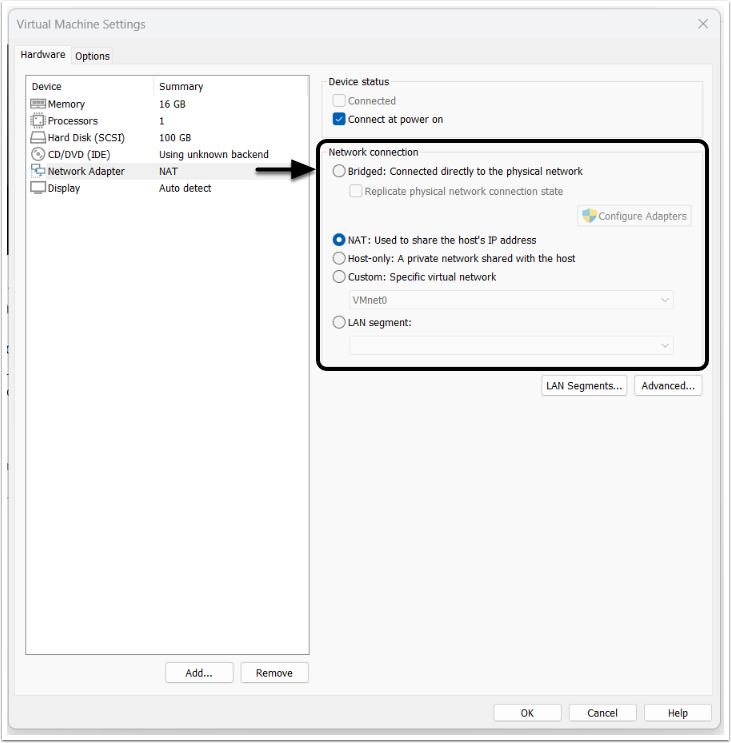
There are two methods of VMware networking that affect how the Metric Insights server can be accessed by you and others on your network. You will need to choose the method that will work for your network.
- Bridged or AutoDetect - This is the default and recommended setting as it allows the virtual machine to automatically get an IP address from your local network.
- Network Address Translation (NAT) - If you do not get an IP address when running under bridged mode, you will need to use NAT networking. Using this method, the virtual machine will share the host operating system's IP address, and the Metric Insights server will only be accessible from the host operating system. If you'd like to be able to access Metric Insights from other machines as well, see How to expose Metric Insights on VMware when using NAT networking.
4.2. Configure the Virtual Machine Resources
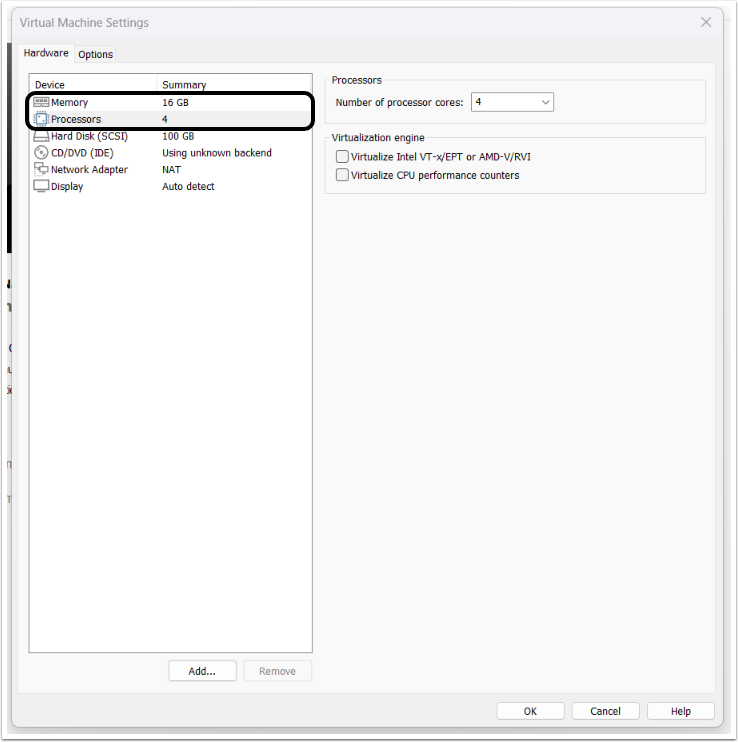
- Memory: 16 GB
- Processors: 4
NOTE: See System Requirements for Pilot Instances for details.
5. Start the Virtual Machine
- [Play virtual machine]
5.1. Get the IP Address of Virtual Machine
Once the virtual machine has started up, you should see a message that looks similar to this.
NOTE: If you do not get an IP address here, the Metric Insights server was not able to get an ip address from your DHCP server. If this happens you will need to set the Network Adapter to use NAT addressing or talk with your local Network Administrator.
5.2. Open Metric Insights IP in Broswer and Accept SSL Warning
Open a web browser and put the IP address obtained above into the address bar. Depending on your browser you will likely get an SSL warning. This is because the Metric Insights server ships with a default self-signed certificate. You can just accept the warning and you will get to the login prompt:
- [Advanced]
- [Accept the Risk and Continue]
